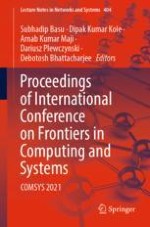
2023 | OriginalPaper | Chapter
Experimental Face Recognition Using Applied Deep Learning Approaches to Find Missing Persons
Authors : Nsikak Imoh, Narasimha Rao Vajjhala, Sandip Rakshit
Published in: Proceedings of International Conference on Frontiers in Computing and Systems
Publisher: Springer Nature Singapore
Activate our intelligent search to find suitable subject content or patents.
Select sections of text to find matching patents with Artificial Intelligence. powered by
Select sections of text to find additional relevant content using AI-assisted search. powered by